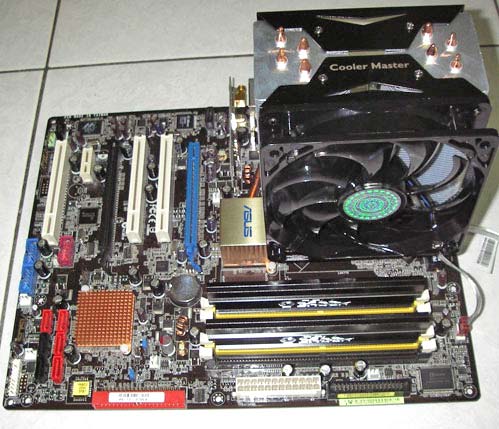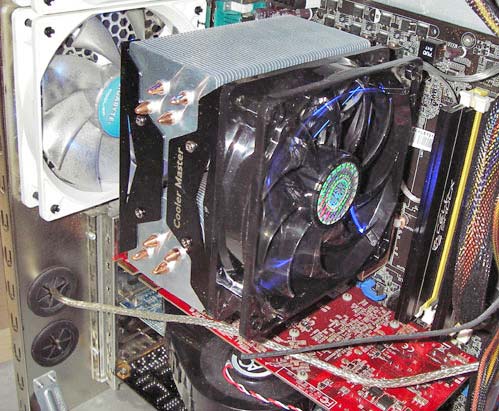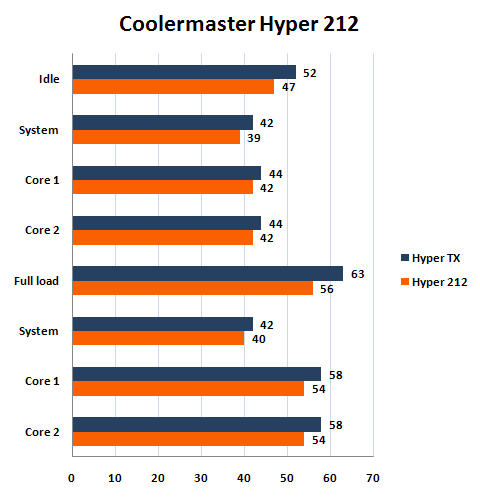Page 3 of 3
Once that’s done, you simply put your motherboard back into the case and connect everything up. By coincidence, the previous cooler in the system was a Cooler Master Hyper TX, a smaller triple heapipe cooler with a 92mm fan and pushpin fittings. In comparison it’s quite light at 484g and it measures 90 x 44 x 136.5mm (WxDxH).

The Hyper 212’s fan is rated at 2,000rpm with an airflow of 69.69 CFM compared to a maximum airflow of 41.76CFM at 1,800rpm for the Hyper TX. The noise level is also meant to be lower at 19dBA compared to 22dBA for the Hyper TX.

We didn’t really notice any difference in terms of noise, but this could well be because of the other fans in the system drowning the low noise from both of these coolers. In either case, you won’t have to worry about noise. We tested the coolers using an Intel Core 2 Duo E6700 which was overclocked to 3.15GHz on an Asus P5B Deluxe/WiFi motherboard. The case was a Gigabyte Aurora 570 with two rear mounted 120mm fans as well as a Gigabyte Odin GT power supply with a 140mm fan.
It’s pretty clear that the Hyper 212 outperforms the Hyper TX, although maybe not by as much as you’d think considering the extra heatpipe, the larger size and larger, faster fan. In idle the CPU temperature difference was 5 degrees C. Interestingly enough the overall system temperature dropped 3 degrees as well.

Running two instances of CPU Burn which the error correction disable to produce as much heat as possible cause the Hyper TX to peak at 63 degrees and the Hyper 212 was a whole 7 degrees cooler at 56 degrees. The system temperature difference was also two degrees cooler.
Overall this looks like a pretty decent cooler to us and you can pick one up for around €29 excluding tax which is quite affordable for the performance you get. It’s an excellent cooler for anyone that wants to overclock without the additional noise that it tends to bring with it, but the Hyper 212 is definitely not for the hard core overclockers.
You can find the product page here
« Prev Next
